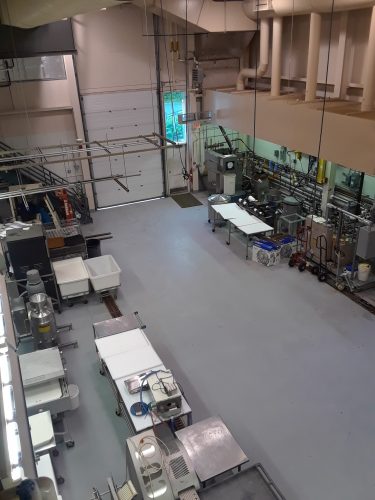Friday Focus: Kodiak Seafood and Marine Science Center
July 9, 2021

— by Julie Queen, vice chancellor for administrative services
Happy New (Fiscal) Year and welcome to FY2022! As this is the busiest time of year for many staff performing financial management duties, thank you very much for your time dedicated to these important close-out and start-up budget procedures. There is a separate column today about UA and UAF FY22 operating and capital budget outcomes, so please look for more details there.
As COVID-19 conditions continue to improve in Alaska, our ability to travel to UAF facilities located throughout the state is also possible again. This in-person connection has been missing over the past year, and we are all pretty excited to engage with our colleagues again. In my role as vice chancellor for administrative services, seeing a facility first-hand and getting to know the people located there, including the research, instruction, or outreach activities taking place, has been so helpful as I familiarize myself with UAF infrastructure needs across the state. For this visit to the Alaska Sea Grant-managed Kodiak Seafood and Marine Science Center, I was accompanied by our provost, interim vice chancellor for research, Alaska Sea Grant director and associate vice chancellor for facilities services.
The UAF KSMSC has an interesting history. Formerly known as the Fisheries Industry Technology Center, it was created by the Alaska Legislature in 1981 as a place to work with industry to develop solutions and build the workforce to address industry needs. The connection to fisheries is strong, as Kodiak is important to Alaska’s fishing industry. The current facility was built in 1991 on Near Island and has a state-of-the-art lab that is used for fisheries research, product development and workshops. Food safety, seafood quality, bycatch reduction, R&D for product development (including some pretty tasty fish byproduct doggie treats — yes, we ate them!), and environmental concerns are only some of the things that Alaska Sea Grant Marine Advisory Program faculty and staff are working on.

COVID-19 stalled an amazing amount of outreach and research that had been moving forward at the KSMSC. For example, research and portable testing kit development potentially impacts coastal residents who could eat shellfish that can cause paralytic shellfish poisoning. There is pent-up demand for smoking and canning workshops and other instructional programs. KSMSC is exploring kelp farming as part of an emerging industry full of innovation opportunities, and is delivering industry training for key fisheries jobs, including encouraging diversity in the fisheries leadership workforce. All of this hands-on work is now being rescheduled for later this summer and fall after being slowed during the pandemic.
This facility is neighbored by a NOAA facility (the Kodiak Fisheries Research Center) and the Alaska Department of Fish and Game, where the opportunity for collaboration exists and is ripe for UAF to expand the studies around marine ecosystems and human interaction along Alaska’s 6,640 miles of coastline. KSMSC has awesome potential as part of UAF’s research and outreach portfolio. This visit, although brief, left our leadership team with a lot of hope — not only related to a transition out of the pandemic, but where our programs are resilient and are poised for growth in ways that will move UAF forward.
I must express my sincere gratitude to Quentin Fong, program coordinator; Ginny Eckert, Alaska Sea Grant director; and the faculty and staff at the KSMSC who truly made this visit special. We also had the opportunity to engage with external stakeholders like the Alaska Research Consortium, fishing industry and Kodiak Island Borough representatives, and the Kodiak Island Wildsource processing plant (a Sun’aq Tribal Enterprise Inc. facility). Quentin was host and tour guide, but also took time from his personal schedule to ensure our UAF team could easily find our way in Kodiak and understand the history of the program as well as opportunities for collaboration, economic development and advancement. This went above and beyond any of our expectations. Thank you.
Friday Focus is a column written by a different member of UAF’s leadership team every week. On occasion, a guest writer is invited to contribute a column.


